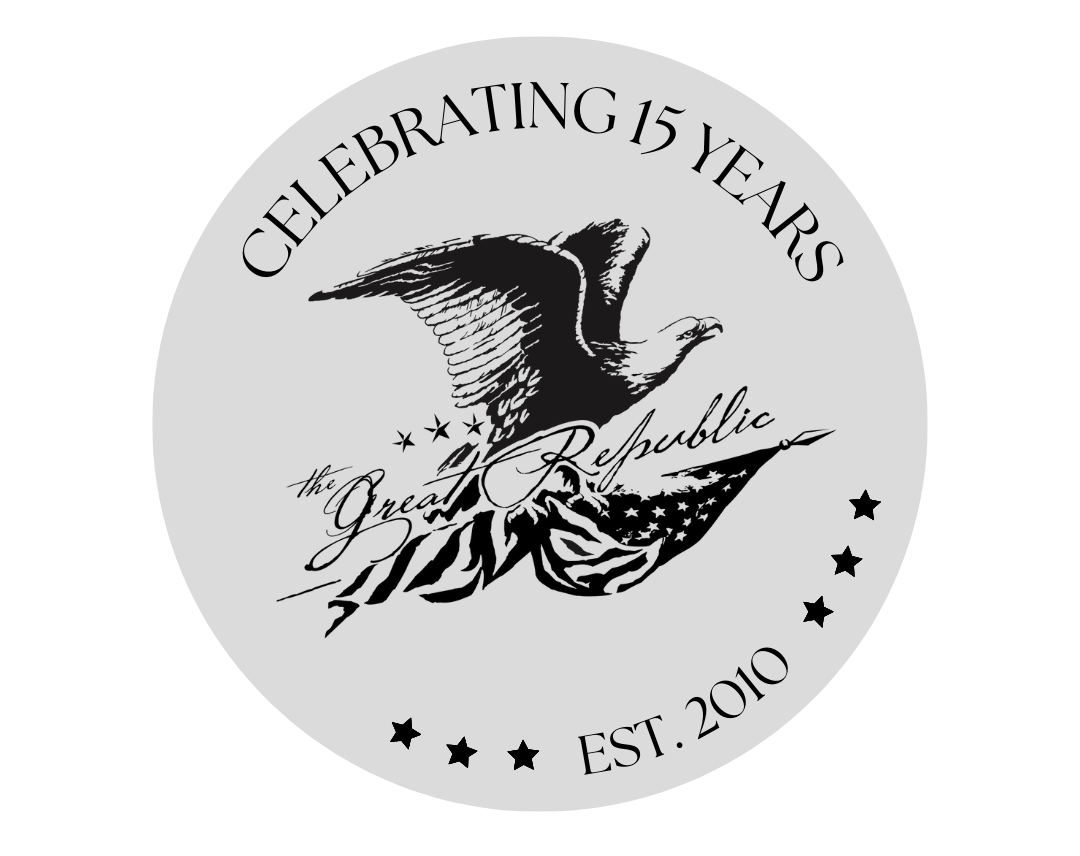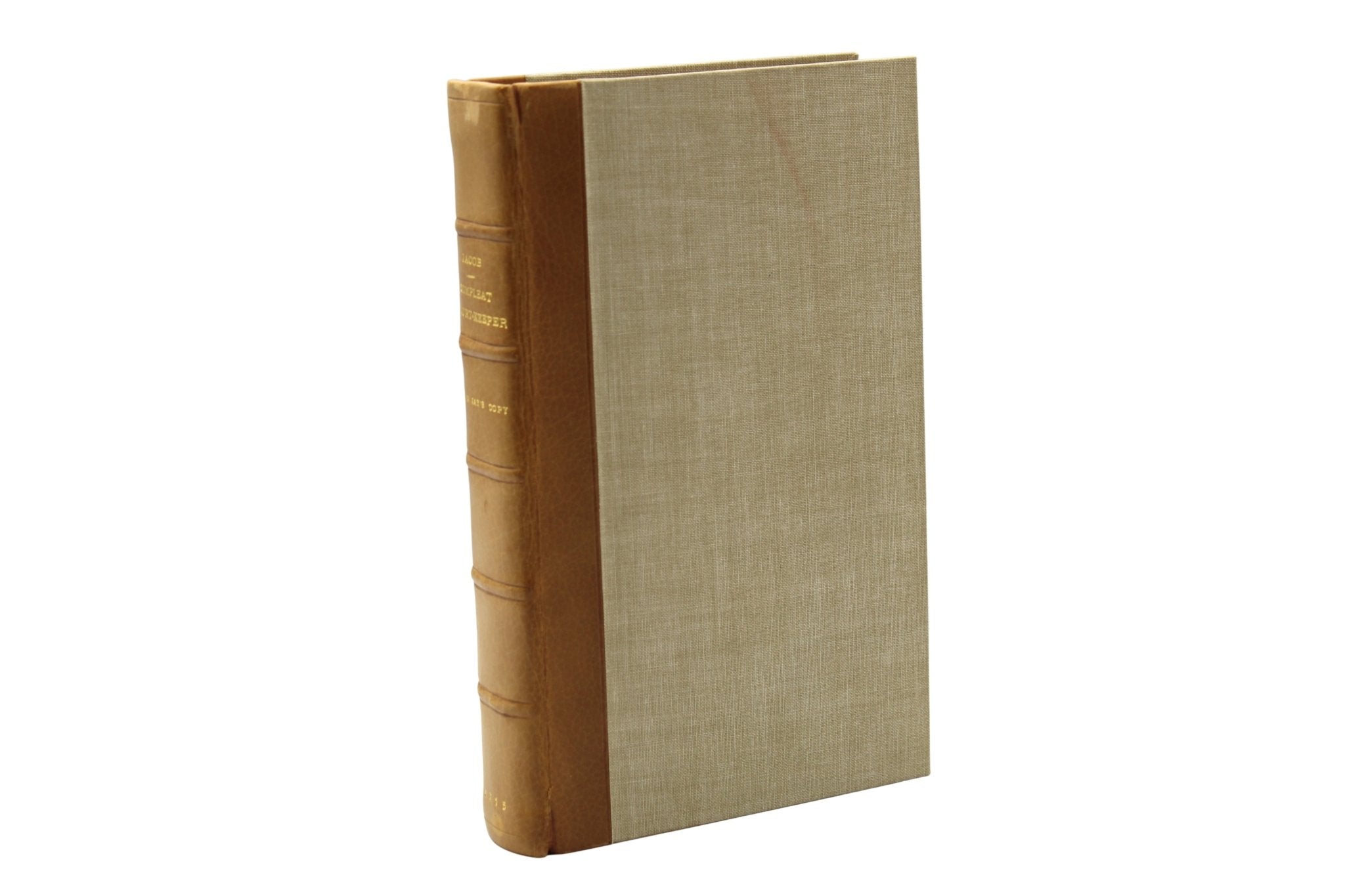
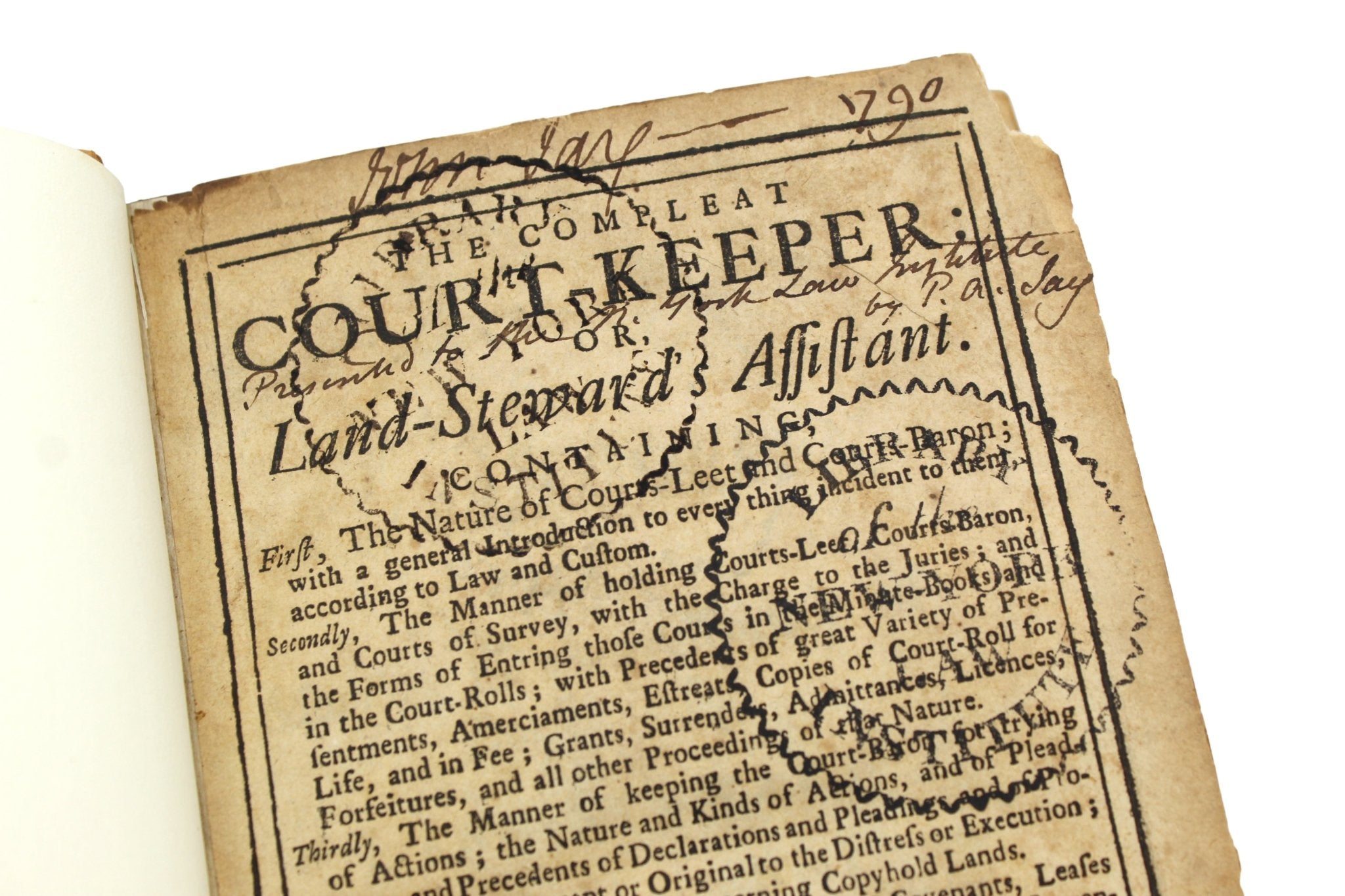
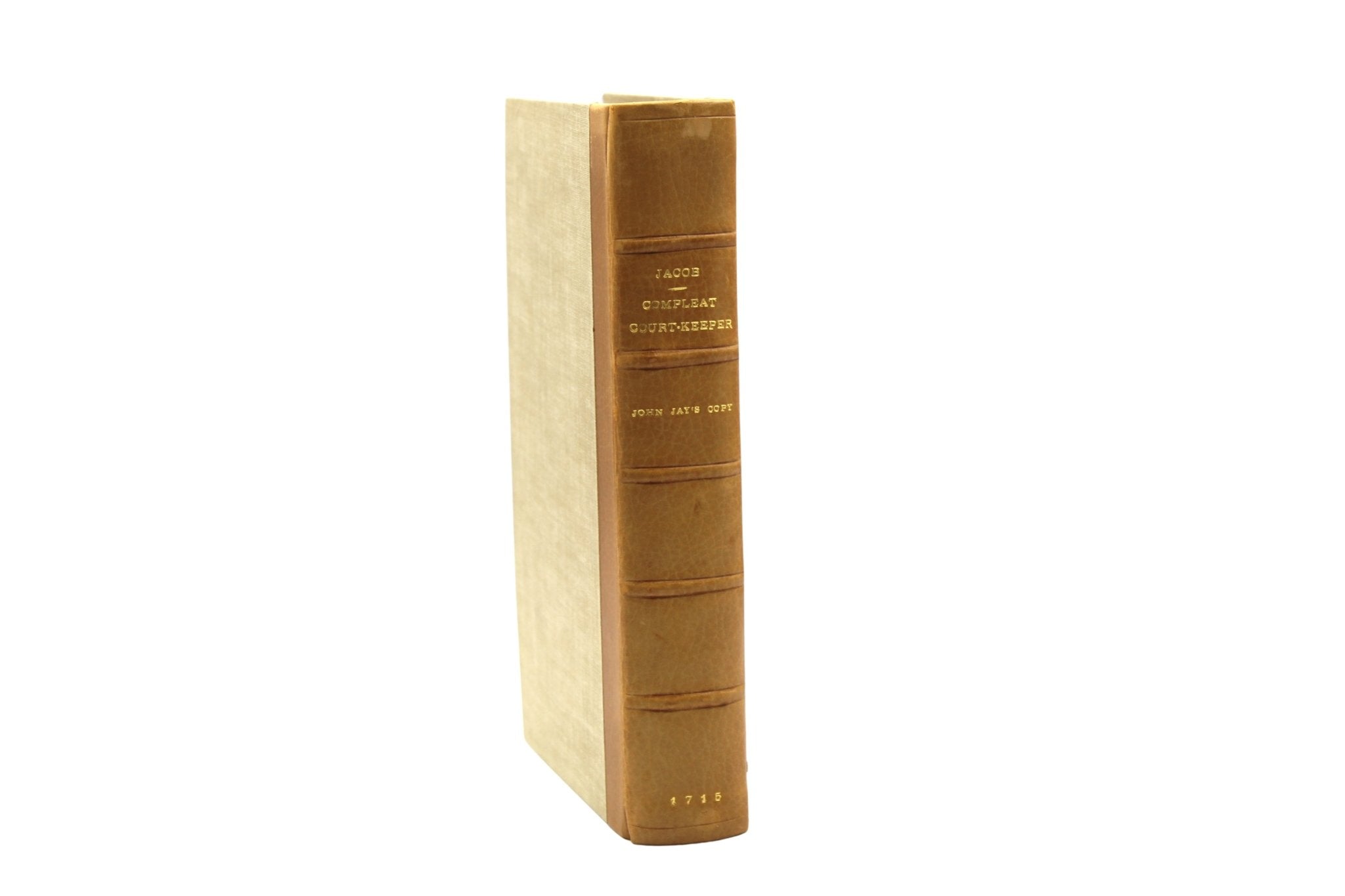
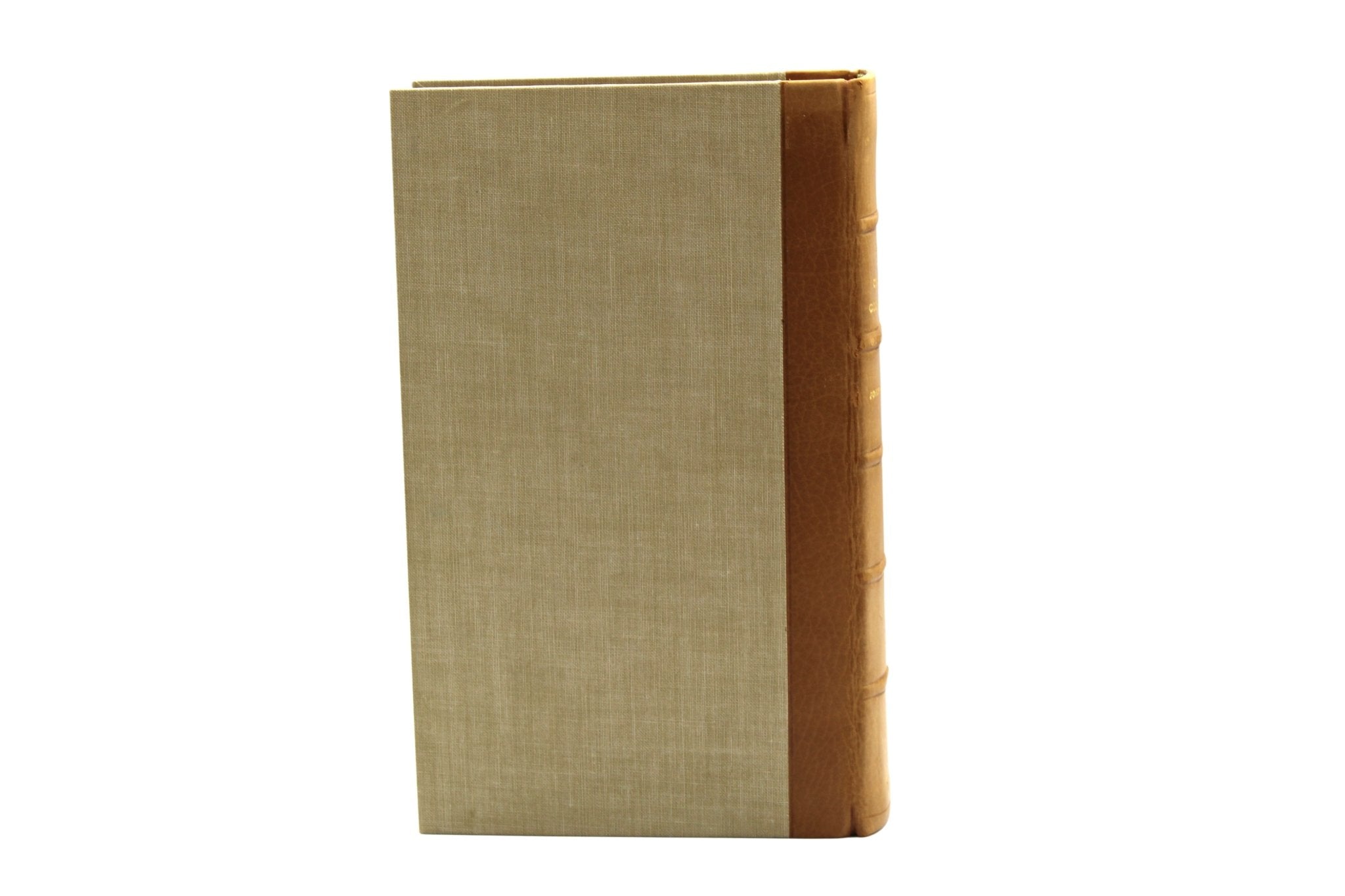
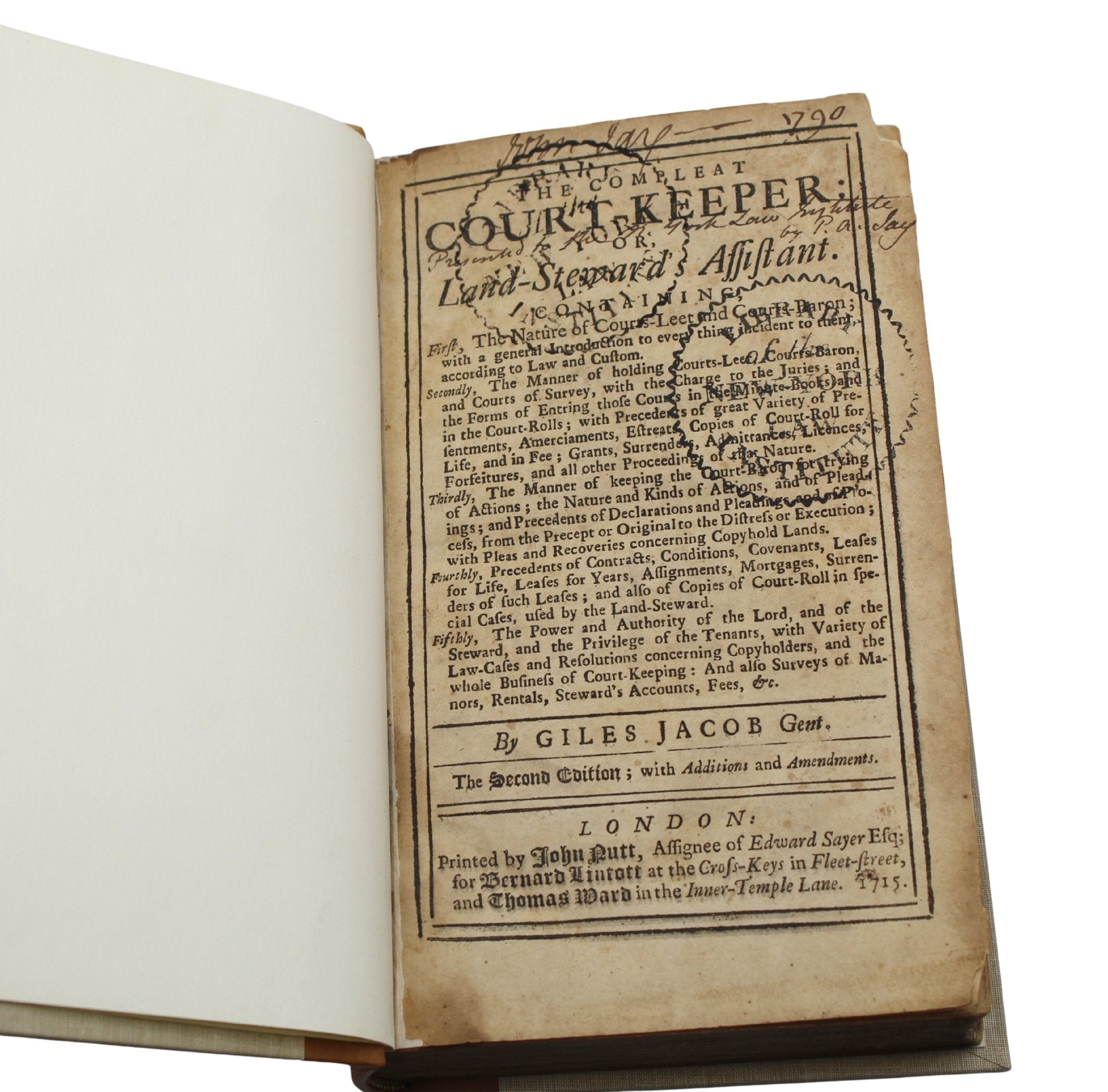
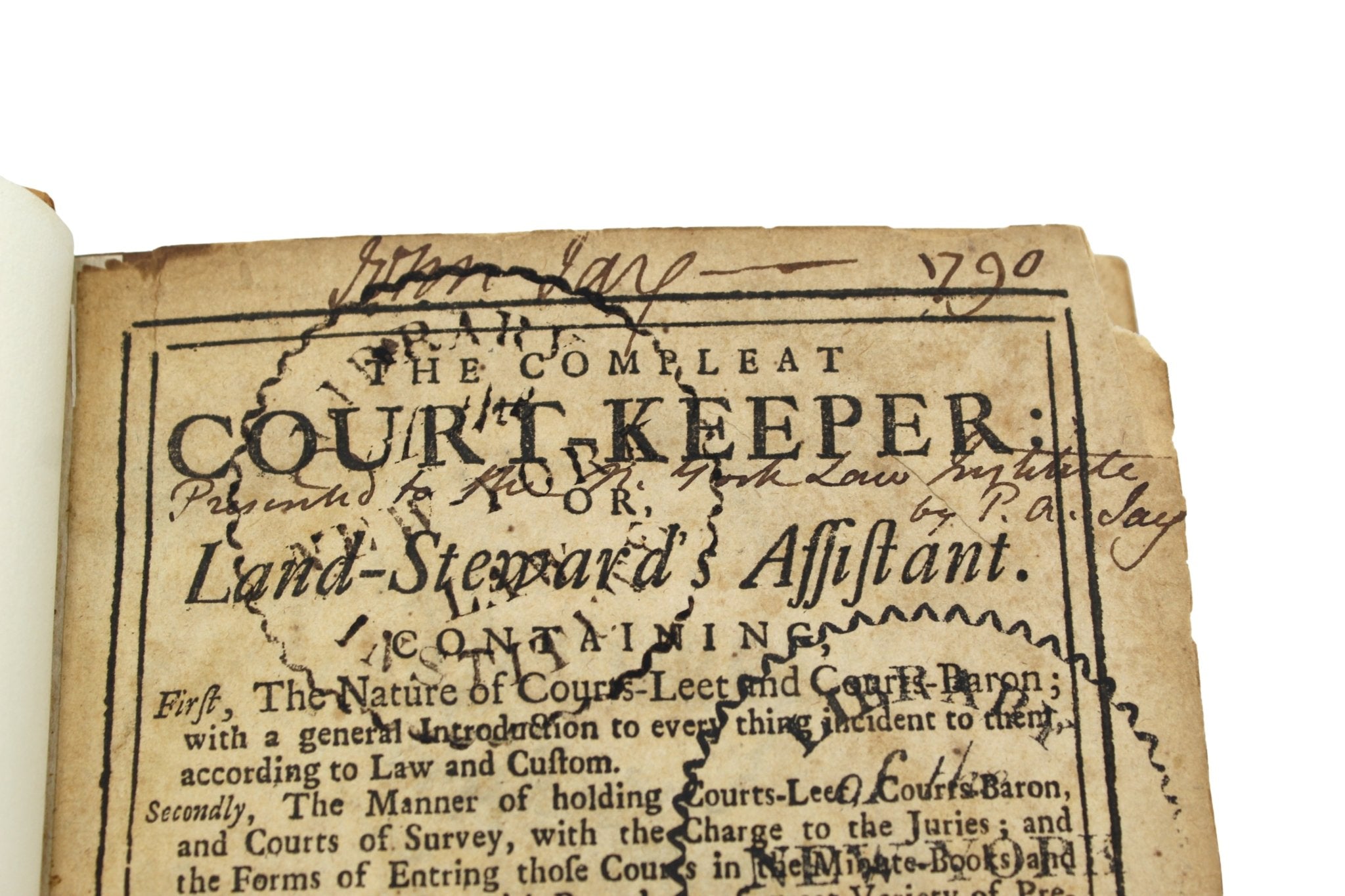
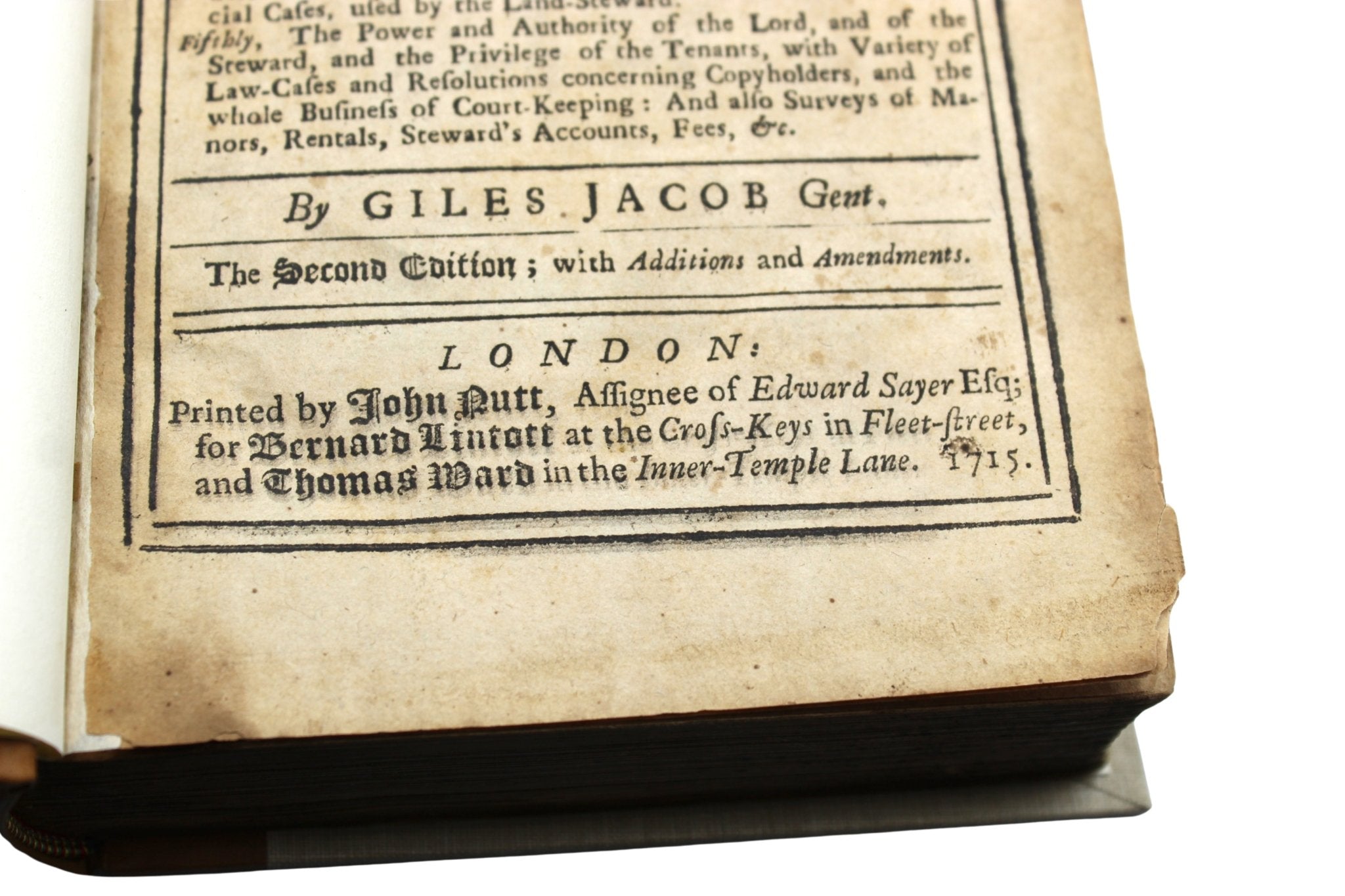
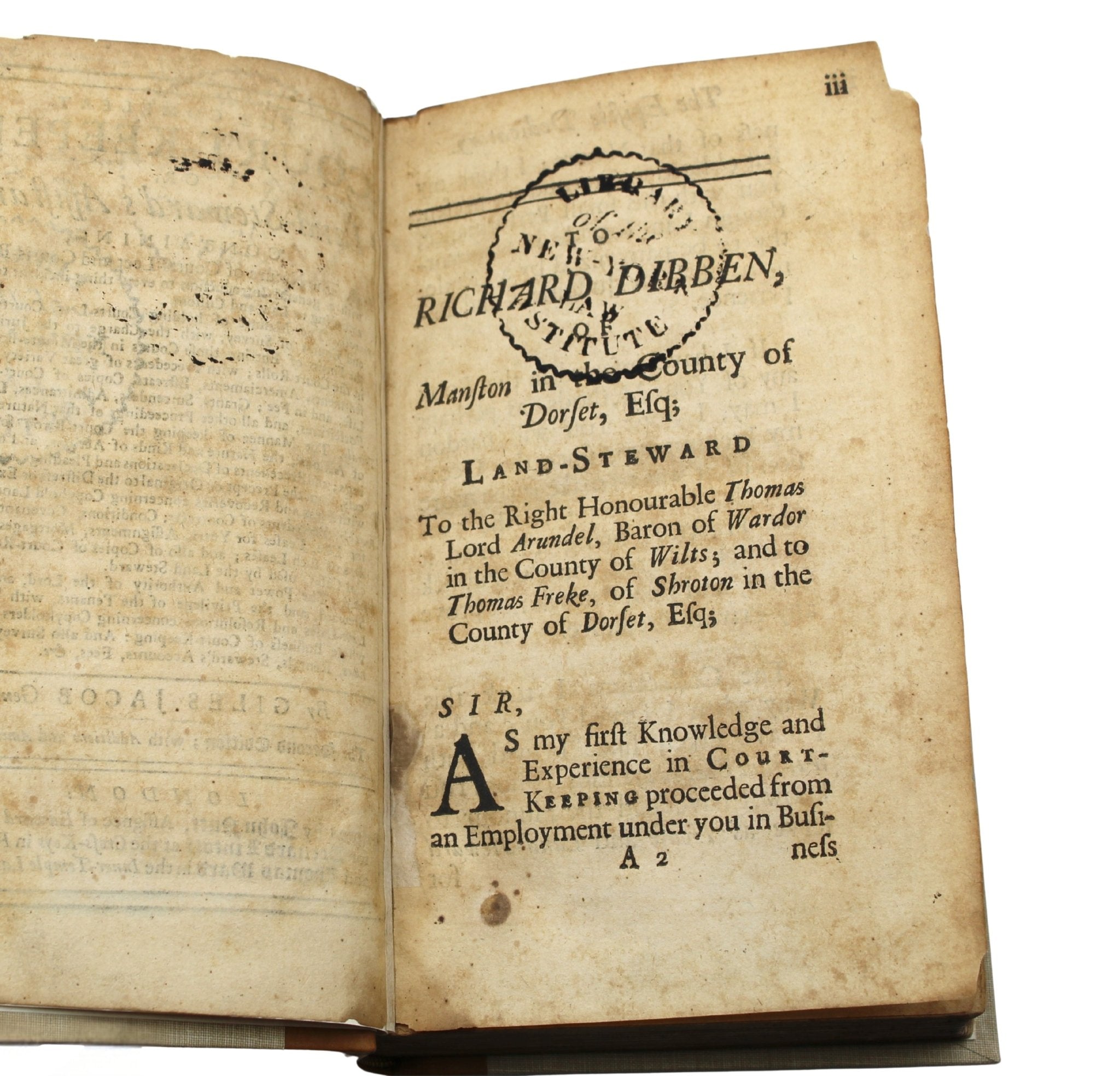
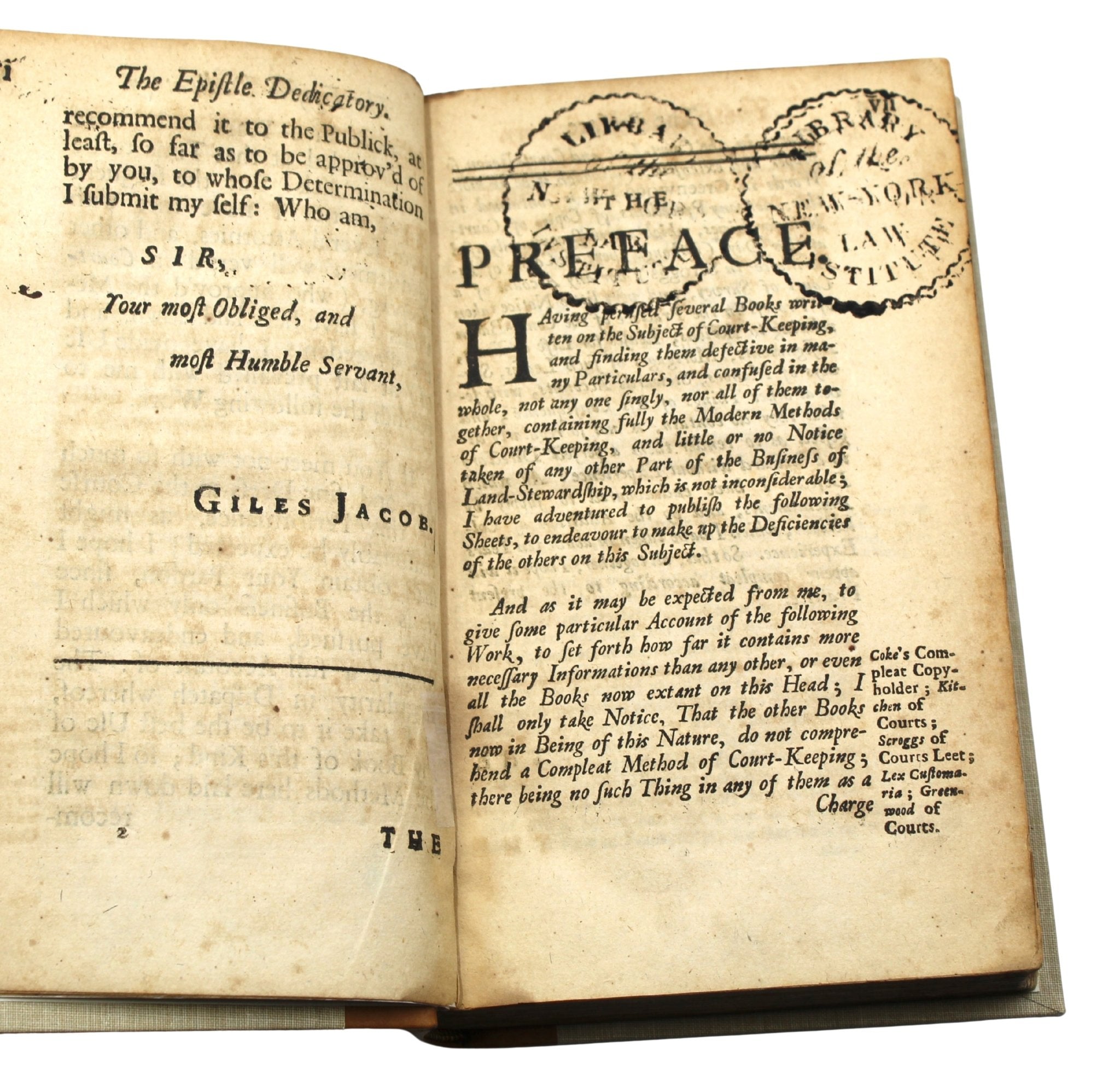
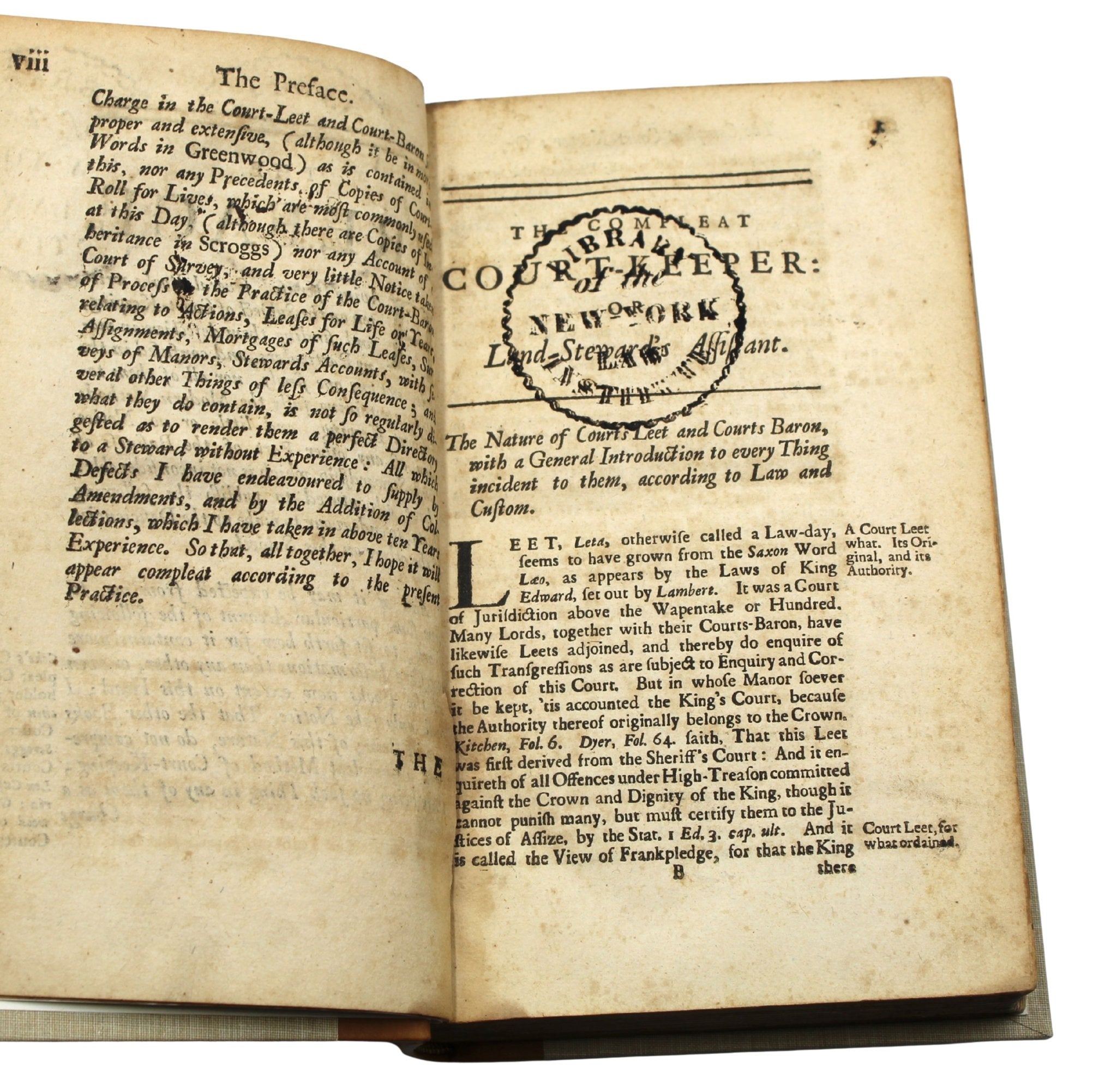
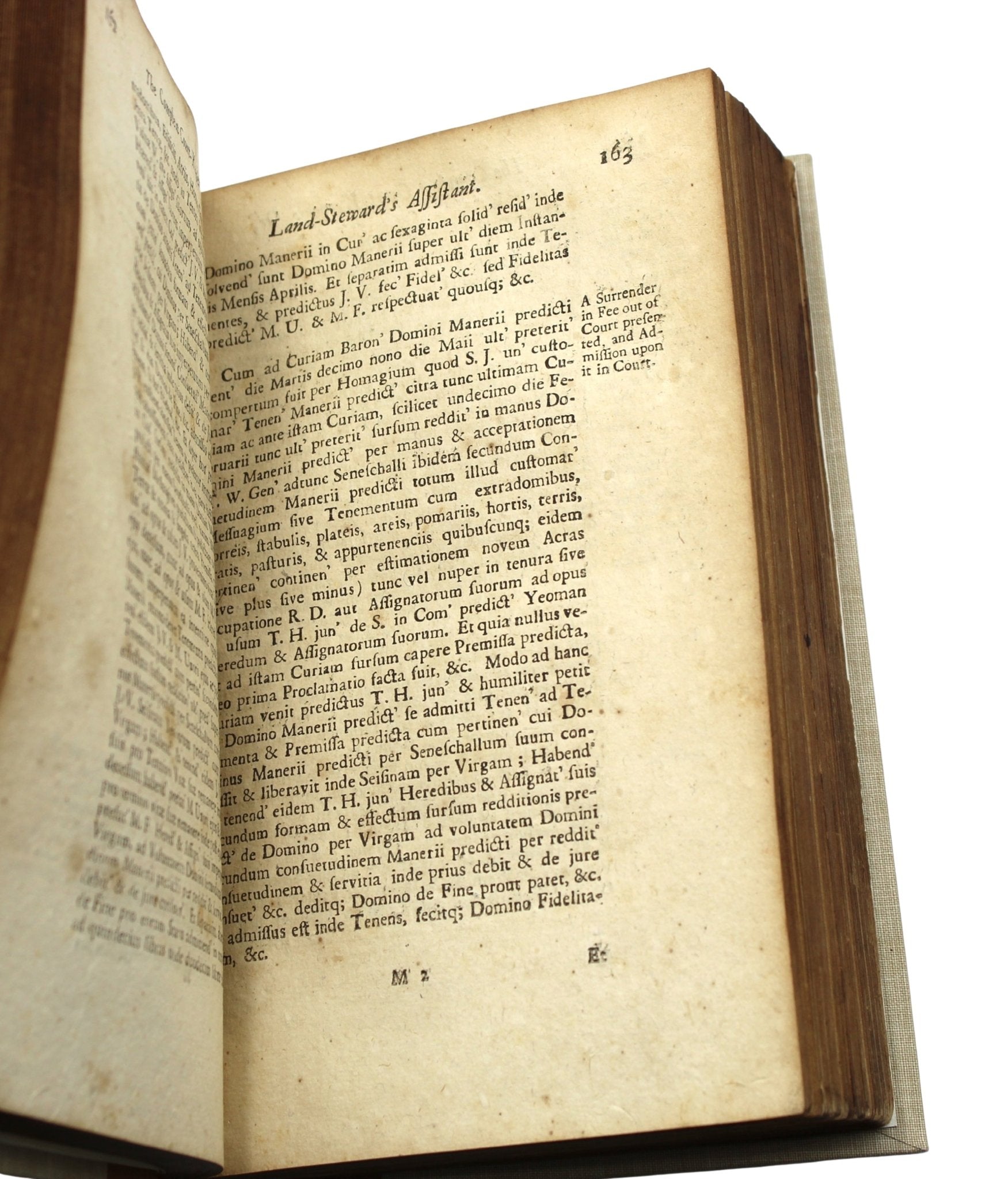
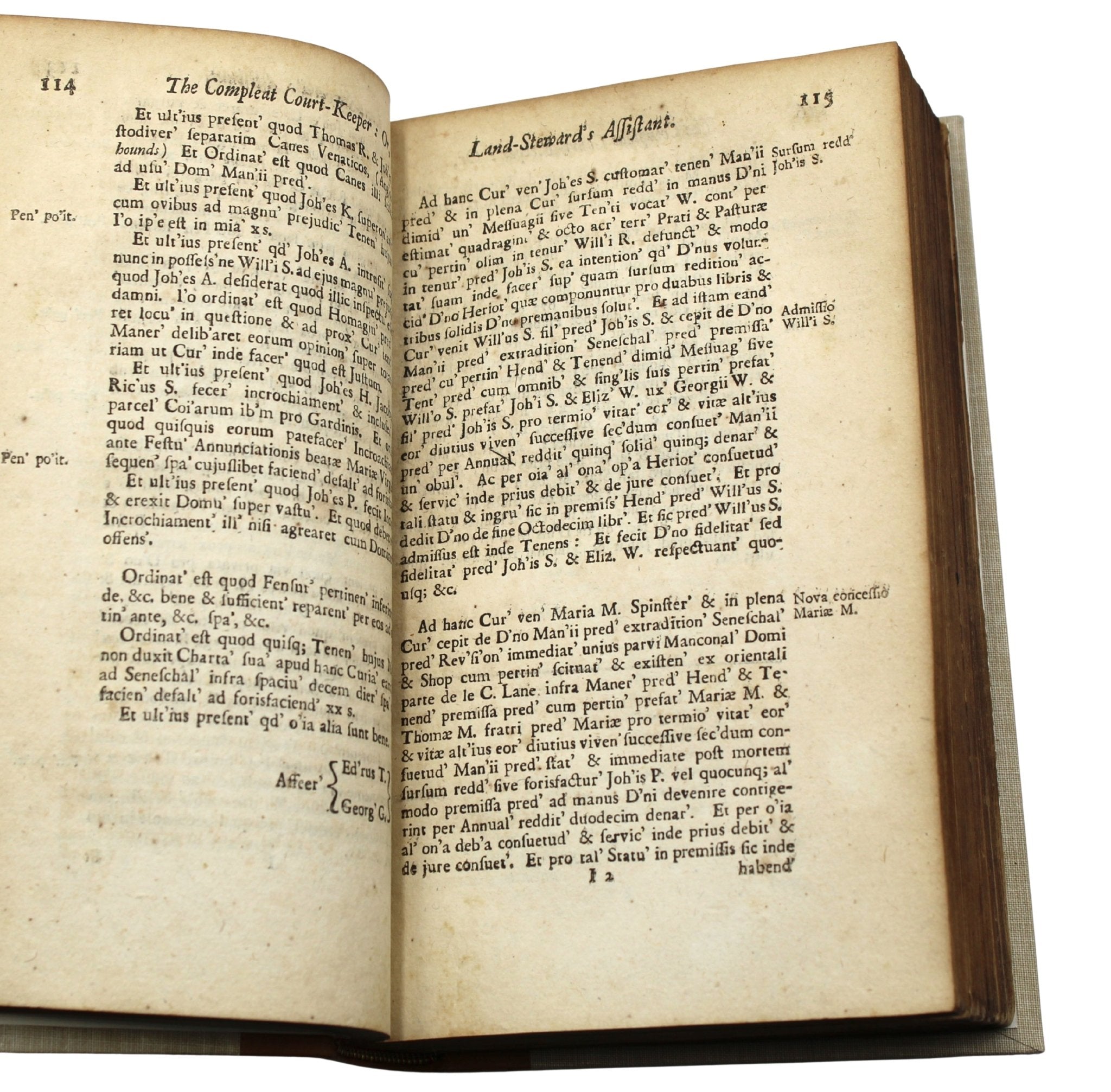
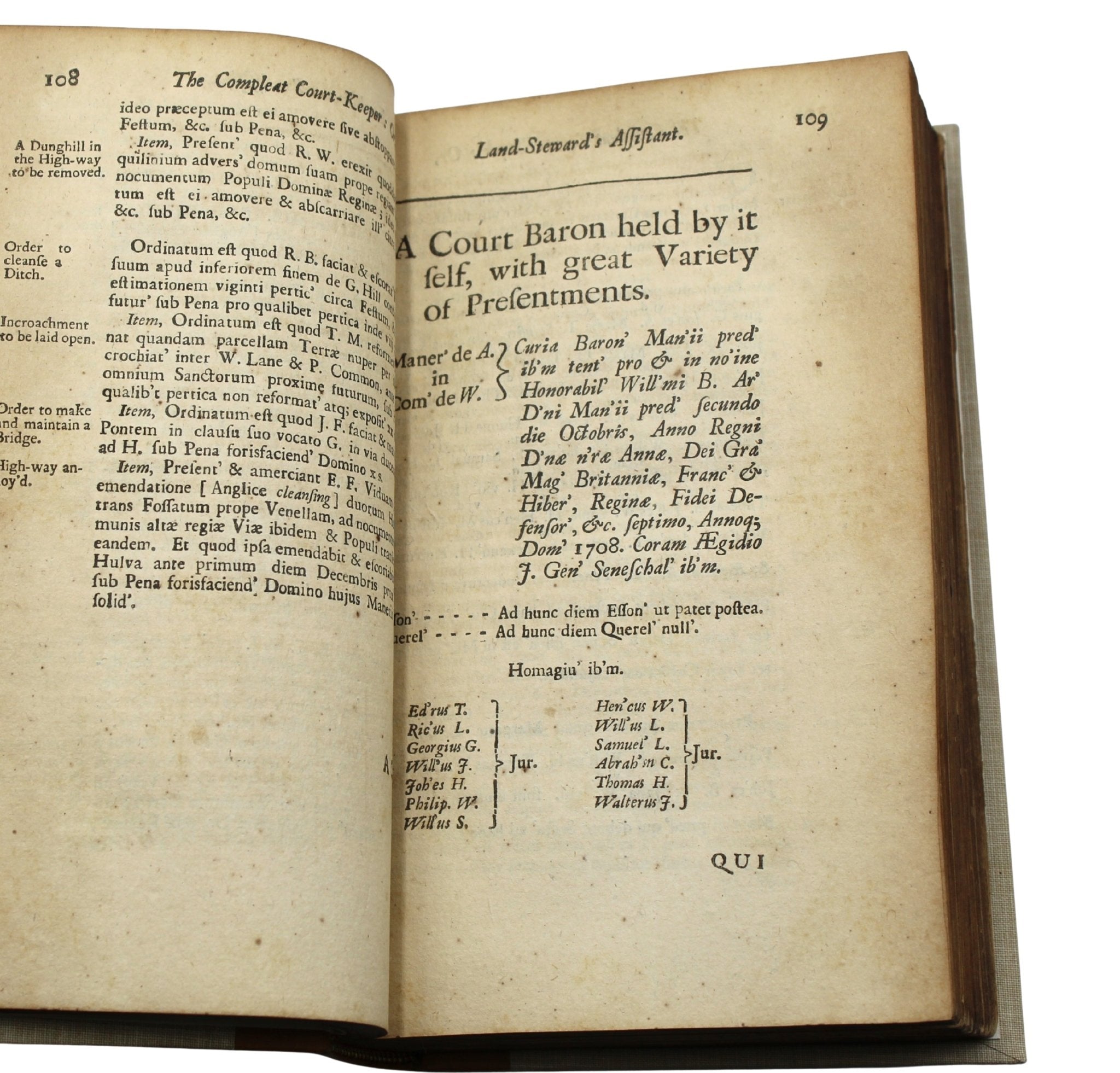
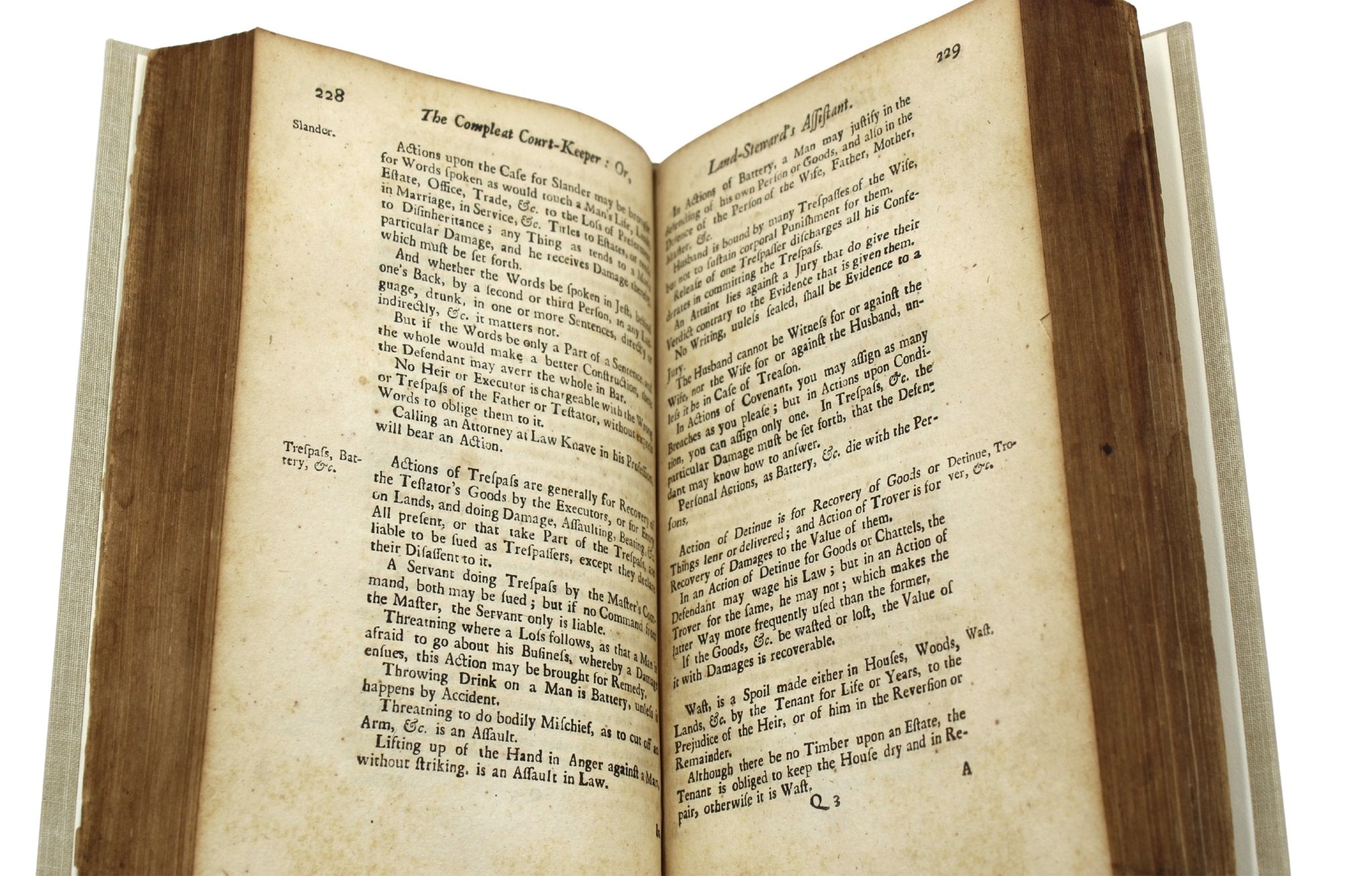
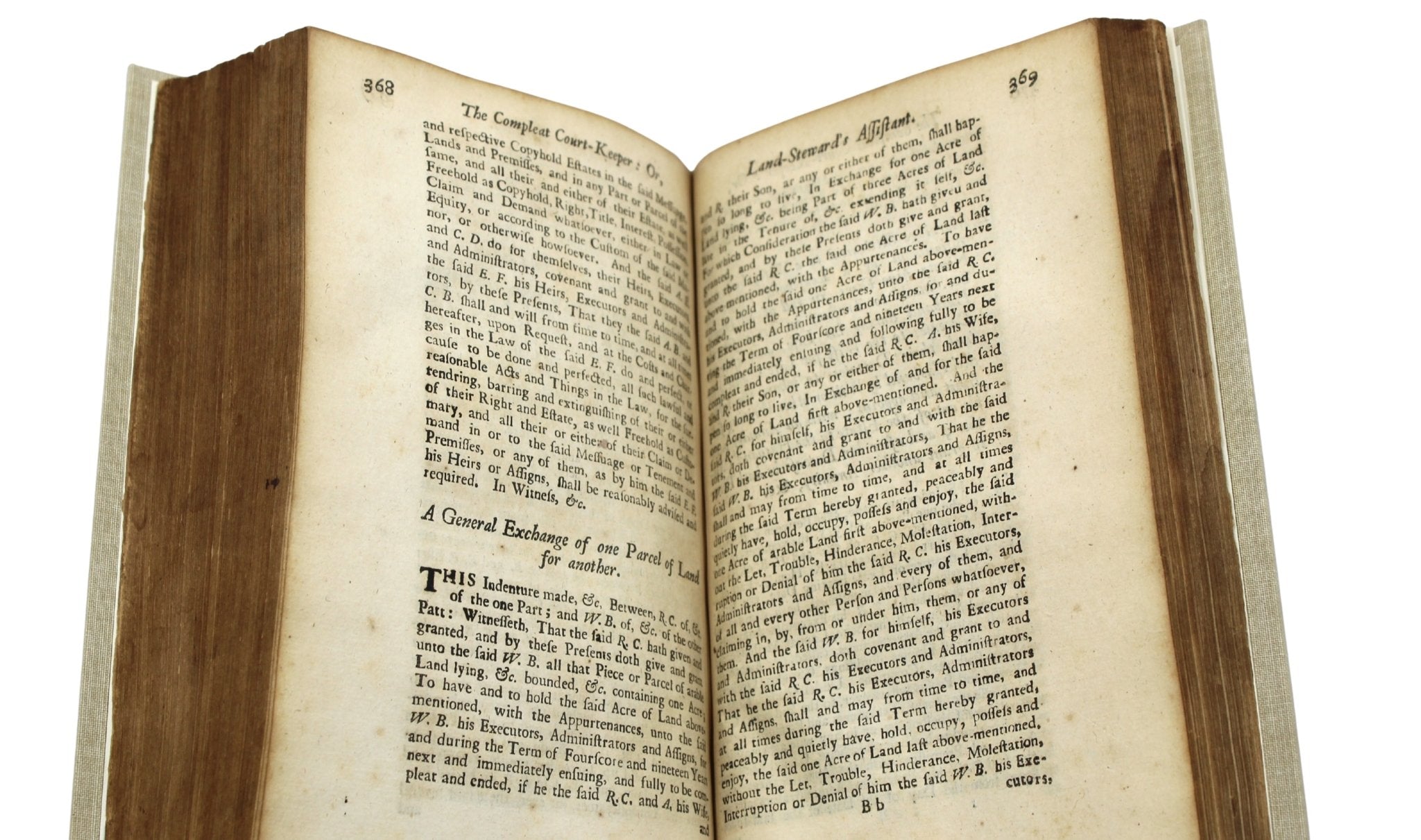
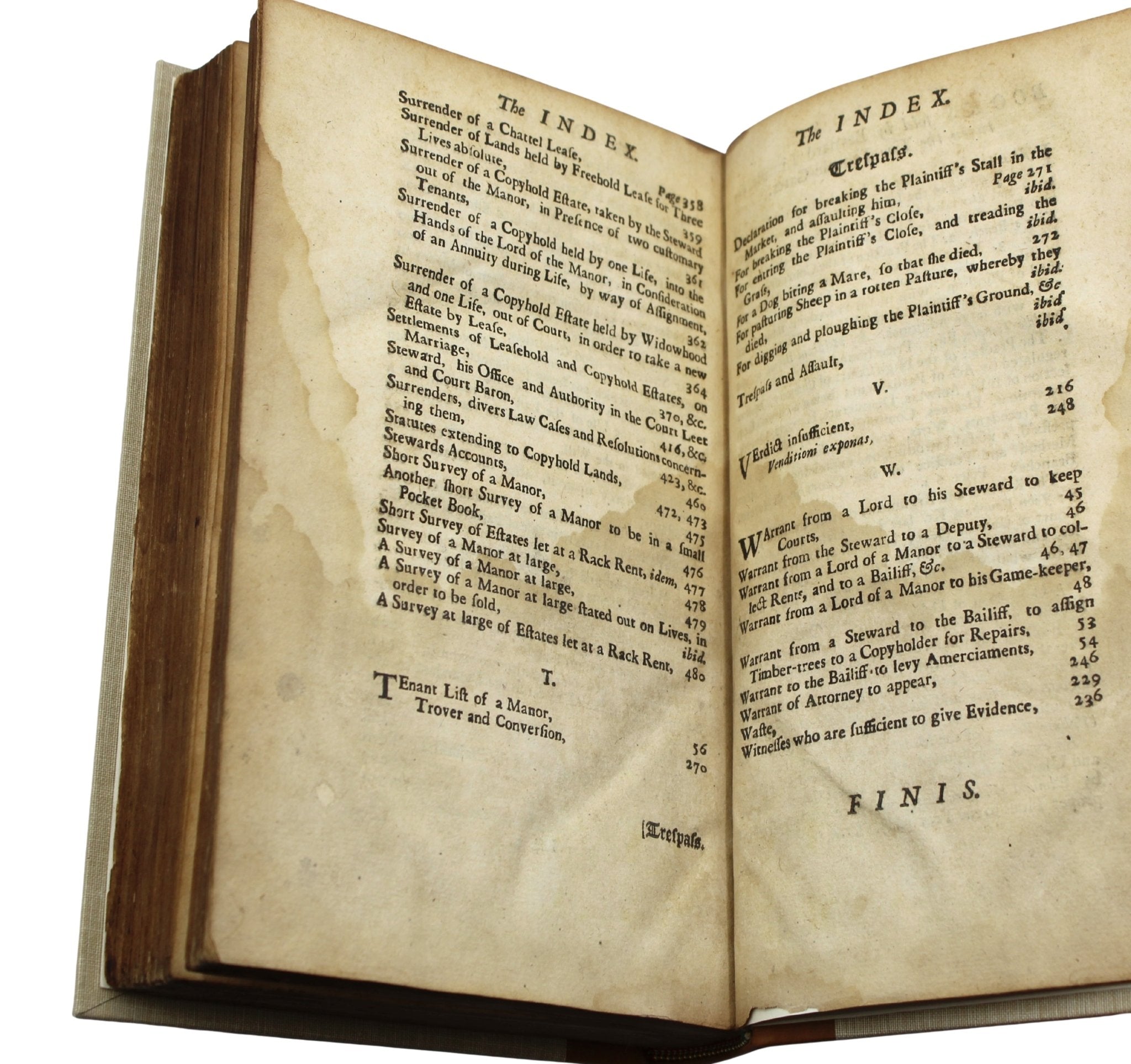
John Jay's Signed Copy of The Compleat Court Keeper; or, Land-Steward’s Assistant by Giles Jacob, Second Edition, 1715
Jacob, Giles. The Compleat Court Keeper; or, Land-Steward’s Assistant. London: John Nutt for Bernard Lintott and Thomas Ward, 1715. Second Edition. Rebound in ¼ brown leather and beige cloth boards. Signed and dated by John Jay, inscribed by Peter Augustus Jay, on the title page. Ex-library: New York Law Institute.
From the personal library of the First Chief Justice of the United States, this is John Jay’s signed edition of the The Compleat Court Keeper; or, Land-Steward’s Assistant. The book is a second edition, printed in 1715 in London by John Nutt, for Bernard Lintott and Thomas Ward. Along the top of the title page, in black ink, is “John Jay — 1790.” Based on the date of “1790” by his ownership signature, Jay acquired this volume shortly after becoming the first Chief Justice of the United States Supreme Court in October 1789. The book was later donated by John Jay's son, Peter Augustus Jay, to the library of the New York Law Institute, the oldest circulating law library in New York City.
The Compleat Court Keeper; or, Land-Steward’s Assistant was a guidebook to explain the history and functioning of courts leet and courts baron, types of manorial courts that existed in feudal England. These courts handled certain civil matters that fell under the authority of the local lord, oftentimes with a steward acting on behalf of the lord of the manor. The author, Giles Jacob, explains his reasoning for writing the volume in his preface: “Having perused several Books written on the Subject of Court-Keeping, and finding them defective in many Particulars, and confused in the whole, not any one singly, nor all of them together, containing fully the Modern Methods of Court-Keeping, and little or no Notice taken of any other Part of the Business of Land-Stewardship, which is not inconsiderable; I have adventured to publish the following Sheets, to endeavour to make up the Deficiencies of the others on this Subject.”
It makes sense that John Jay, as Chief Justice of the United States Supreme Court, would have had this British book on manorial courts in his law library. In the aftermath of the American Revolution, both the individual states and the newly formed United States mitigated the necessity of drafting an entirely new legal framework by adopting British statutes and legal procedures that were compatible with the American context and not inconsistent with the Constitution. Between 1776 and 1784, eleven of the thirteen original states enacted provisions to retain the application of common law and select British statutes.
John Jay (1745–1829) was a prominent Founding Father who played key roles during both the American Revolutionary War and the early years of the United States. Born into a wealthy merchant family in New York City, Jay graduated from King’s College, now Columbia University, in 1764 and became a practicing lawyer by 1768. Initially cautious in the face of rising tensions with Britain, he gradually emerged as a strong patriot. He served in both the First and Second Continental Congresses and was an active member of the New York Committee of Correspondence. Although his duties in the New York Provincial Congress kept him from signing the Declaration of Independence, he supported its goals and helped draft New York’s first state constitution in 1777.
Jay held several influential political and judicial positions during and after the Revolution. He served as Chief Justice of New York’s Supreme Court of Judicature and later as President of the Continental Congress from December 1778 to September 1779. Appointed as minister to Spain, Jay was sent to the Spanish royal court to secure financial support for the American cause, and though rebuffed, he went on to help negotiate the 1783 Treaty of Paris, which ended the Revolutionary War. From 1784 to 1789, he served as Secretary of Foreign Affairs, and in 1788, he co-authored several of the Federalist Papers, focusing on foreign policy. He accepted George Washington’s nomination to be the first Chief Justice of the United States Supreme Court in 1789 and held that position until 1795.
In 1795, while serving as Chief Justice, Jay negotiated the controversial Jay Treaty with Britain to avert another war. Despite political backlash from the Democratic-Republicans, the treaty was ratified in the Senate. During his time in Europe, he was elected Governor of New York. He resigned from the Supreme Court to serve as governor from 1795 to 1801. After turning down further political appointments, including re-nomination to the Supreme Court and the governorship, Jay retired from public life and his remaining years on a farm in Westchester County.
CONDITION:
Very good + condition. Rebound in ¼ Moroccan brown leather and cream cloth boards, with raised bands and gilt titles to the spine. Some marginal browning or spotting, small corner tear to margin on A-A4 including title-page, several leaves near end dampstained. Spine gently sunned. Ownership signature “John Jay – 1790” along top of title page, in black ink. Additional gift-inscription to the New York Law Institute by and in the hand of John Jay’s eldest son, Peter Augustus Jay, on the title page. Several New York Law Institute Library stamps on title-page and preface.
Book Dimensions: 7 13/16" H x 4 13/16" W x 1 5/16" D.
Accompanied by our company's letter of authenticity. Excluded from company promotions or sales.
Pickup available at Colorado
Usually ready in 4 hours

John Jay's Signed Copy of The Compleat Court Keeper; or, Land-Steward’s Assistant by Giles Jacob, Second Edition, 1715
Colorado
1 Lake Avenue
Colorado Springs CO 80906
United States
Choose options
















Frequently Asked Questions
FAQs
Yes, all of our Antiques are certified authentic. Every antique comes with a signed Letter of Authenticity that details the item’s history, its current condition including any conservation, binding, or framing work, and the item’s provenance. The Letters of Authenticity are priced valuations by our authentication specialists, who assure that items are original and unconditionally guaranteed as genuine for life.
We pack and ship your items from our gallery in Colorado Springs. You may also choose to come pick up your order. Antique items are carefully packed and insured during shipping. The shipping price will be calculated at checkout.
We acquire from a variety of trusted sources all over the world, but mostly through auctions and private collections within the United States. All provenance information will be listed on the Letter of
Authenticity accompanying your purchase.

